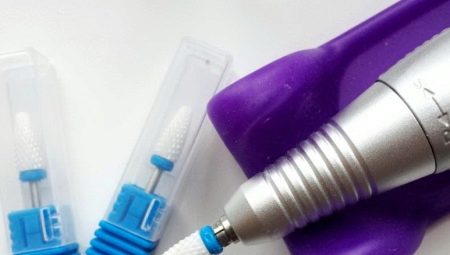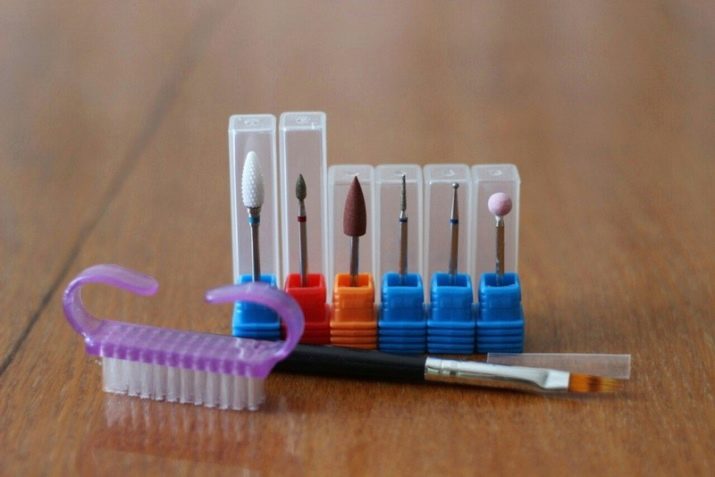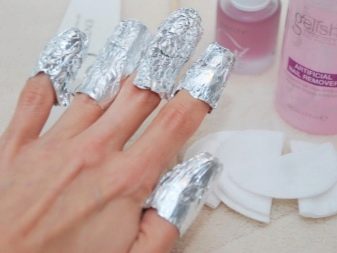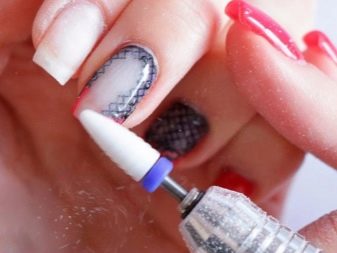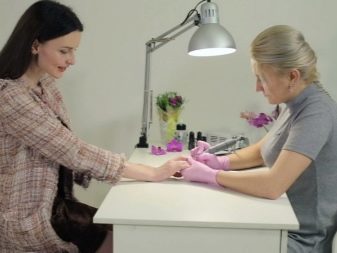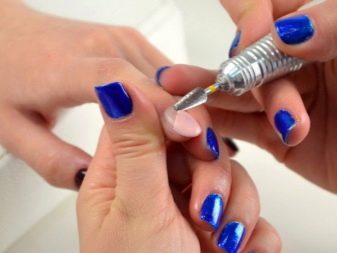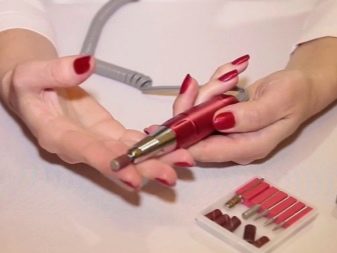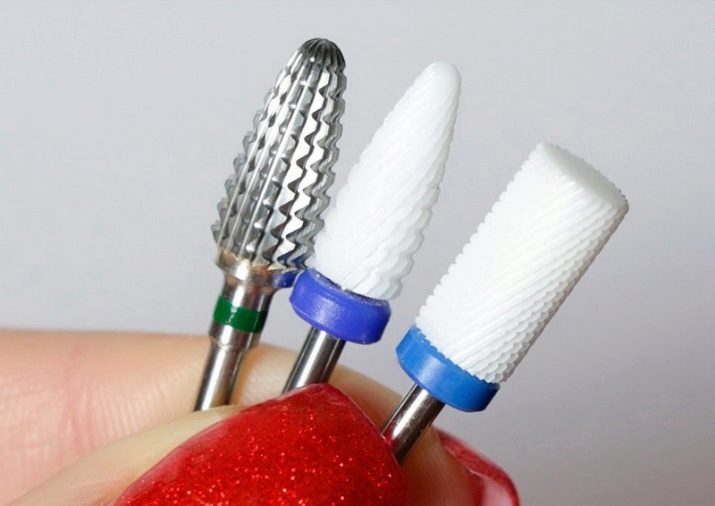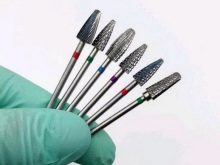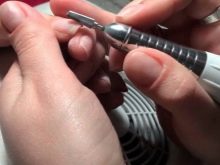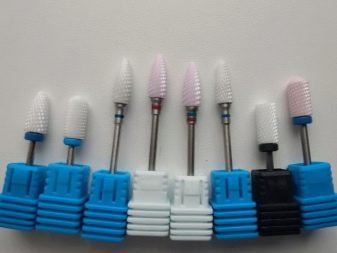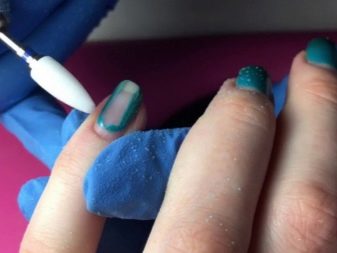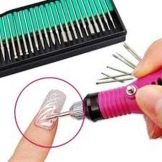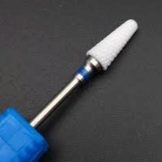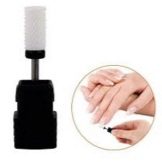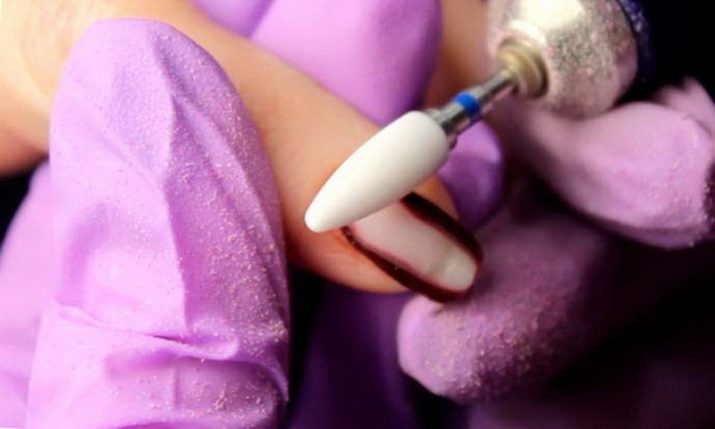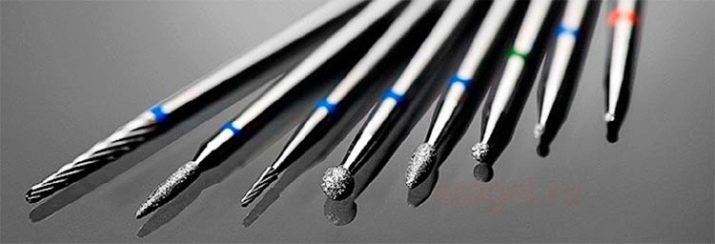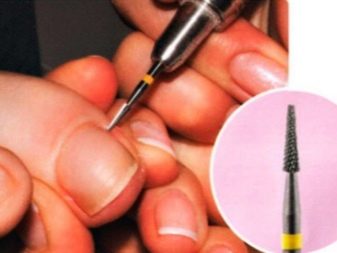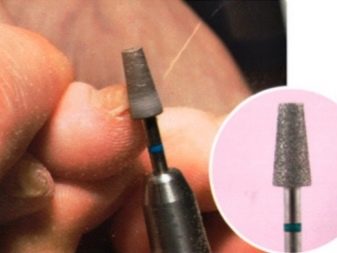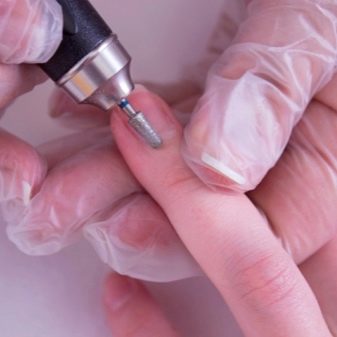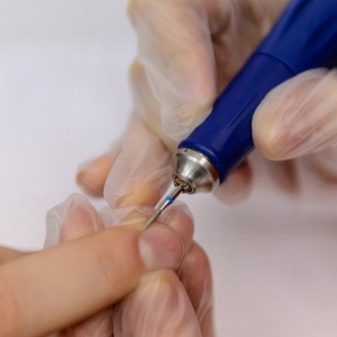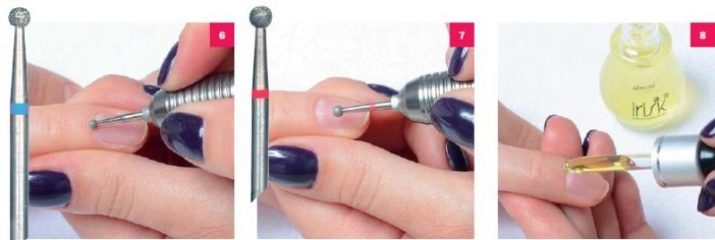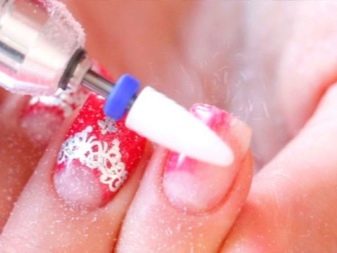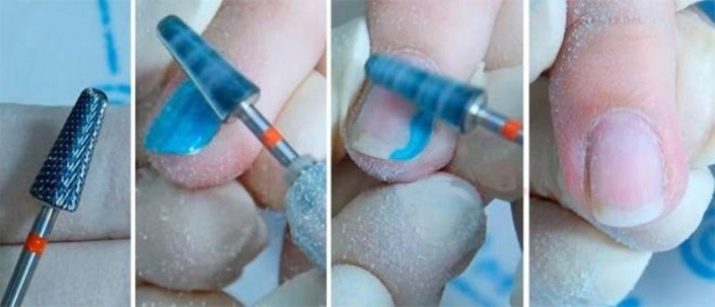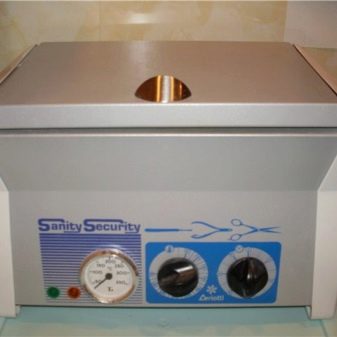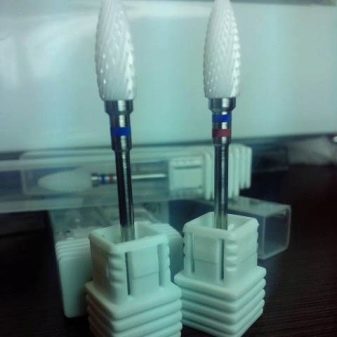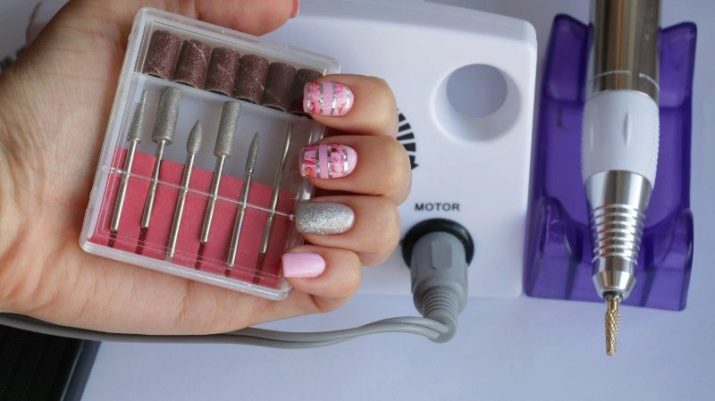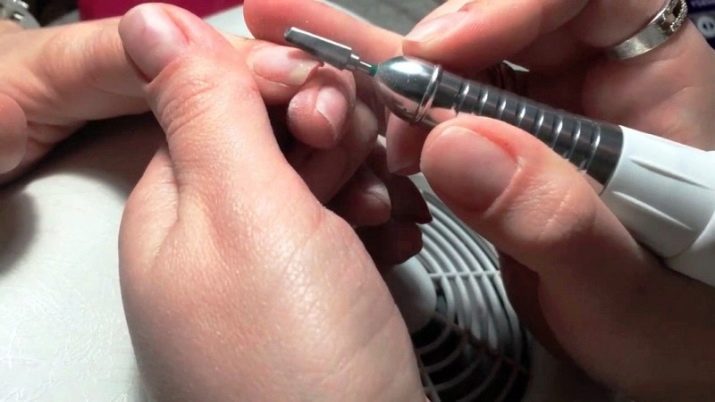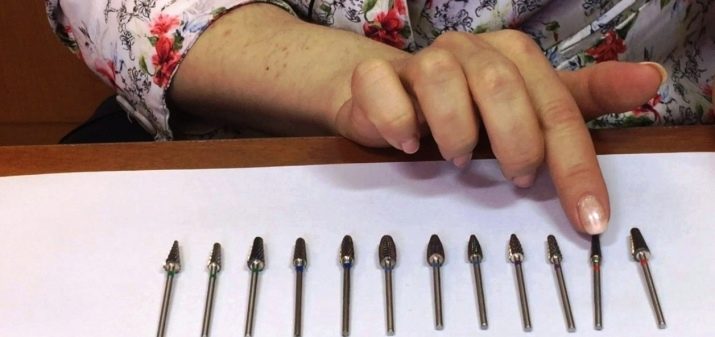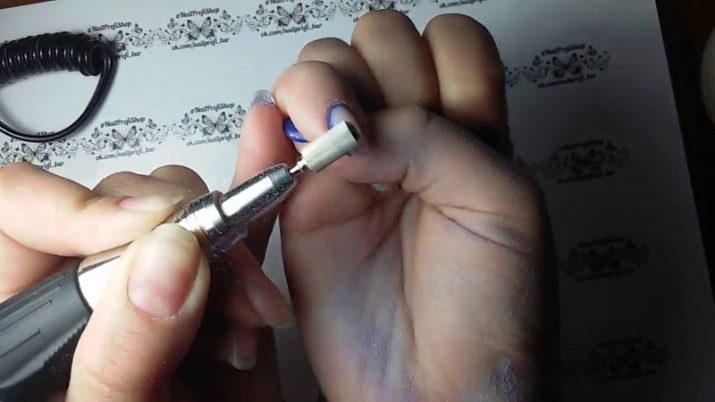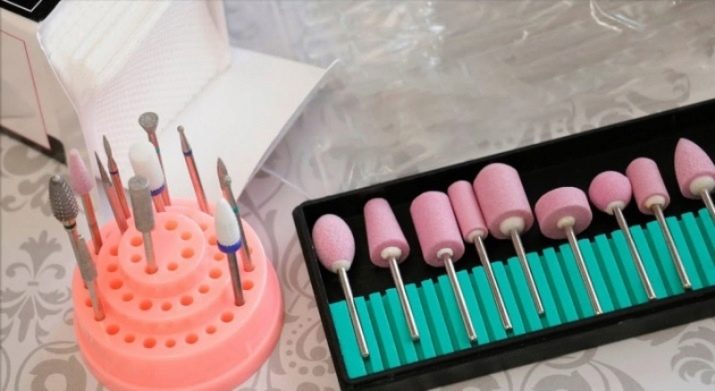One of those tools, the presence of which allows you to significantly simplify the work of manicure masters, are the cutters - special nozzles created to solve various tasks. The latter includes the removal of the gel polish - a procedure that is performed using many types of this inventory, differing in material, shape and other characteristics. Special attention should be paid to the features of working with such cutters, the knowledge of which helps the master to avoid mistakes and achieve the desired result with the least amount of time.
What it is?
To date, there are two main ways to remove gel polish. The first involves the use of special fluids, referred to as remuvers, and the second involves the use of a manicure device - a milling cutter. Practice shows that both methods have a mass of staunch supporters, but experts consider the latter to be much more progressive. This is explained by the fact that liquids for removing gel polish make nails too dry, gradually weaken them and often provoke delamination of the plates, while the cutters do not lead to such problems.
Important: the main cause of brittle nails are not gel polishes, as many people still believe, but remuvers, which include aggressive chemical compounds.
Given this circumstance, masters are increasingly preferring the cutting of coatings with the help of cutters - rotating tools equipped with strong tips. To solve this problem, they use the same device that is designed to perform a hardware manicure, changing the nozzles to more suitable ones. Removing the gel polish in this way involves treating the nail surface with a cutter that has a very high rotational speed.
If the device is in the hands of an experienced specialist, hardware cutting does not last long - on average, from 5 to 15 minutes - and does not cause any discomfort to the client. If the master performs correctly, this procedure does not damage the nail (due to the fact that the rotating parts do not come into contact with its natural surface). Moreover, the preservation of the base coating only strengthens the plate, increasing its resistance to negative external influences.
As for the shortcomings of the method of removing gel polish using cutters, they are listed below:
- the inadmissibility of the processing of nail plates, characterized by severe dystrophy and hypersensitivity;
- the high cost of the router and nozzles that meet international quality standards (low-end products are cheaper, but their performance and durability leave much to be desired);
- inability to use in situations with customers who are allergic to dust.
Also, experts do not advise to remove the gel polish through a milling cutter, which has low power, in order to avoid overheating of the nail plate.
Varieties
Despite the many types of nozzles, successfully used by masters of hardware manicure, for the removal of gel varnish most often used only two of their varieties - metal and ceramic. The reason for this is the properties of the materials from which such mills are produced, which allow solving the set tasks with maximum efficiency.
Metallic
The materials used in this type of nozzles are hard alloys - relatively inexpensive and possessing a decent operating resource. Other features of such cutters are the following characteristics.
- Various notch shapes. Can be straight, oblique or made in the form of a cross.
- Cutting material to form chips. The use of carbide tips does not cause dust.
- Possibility of rotation: as clockwise, and in two directions. The first type of nozzles is called ordinary, and the second - reversible.
Another feature of the metal cutters for removing gel polish, which is paid attention to by professionals, is the size of the notches. It is desirable that the latter were large - in order to avoid ingress of the removed material into the grooves between the teeth and clogging the nozzle.
Ceramic
This type of cutter appeared relatively recently, but now it can boast impressive popularity. Such nozzles are made of ceramics, which consists of plastic clay, bone ash, feldspar and other ingredients, allowing to obtain a material with optimum strength and resistance to wear.
Ceramic cutters have the following key features:
- impressive hardness, which allows to serve 3-4 times longer than the best carbide nozzles;
- soft action, due to which the master can perform work requiring special accuracy and delicacy;
- minimal heat in contact with the treated surface to avoid the appearance of unpleasant sensations in the client;
- no problems caused by clogging (the coating removed by the ceramic cutter turns into dust and not chips).
The latter circumstance can be considered both an advantage and a disadvantage of the described variety of nozzles - due to the fact that a large amount of varnish dust is in the air and scatters around the room. To avoid this trouble allows the use of a special vacuum cleaner, which is part of the device for a manicure or installed separately.
How to choose a mill?
The first thing you need to pay attention to when purchasing a gel polish remover is the manufacturer's reputation. This means that the purchase of products of dubious origin that do not have a certificate should be abandoned in order not to risk the client's health and the performance of the equipment used. Another important criterion that must be considered when choosing a cutter - the shape of the head. Its main varieties are:
- cylindrical (can be straight or rounded);
- acicular;
- equipped with a small ball at the end;
- conical (classic or truncated);
- figured (can be shaped like pikes or bullets).
Most often, manicurists use a ceramic nozzle, which is close in shape to a truncated cone, which is called “corn”. Such popularity is due to the high efficiency and safety of using this tool.
Special attention should be paid to the rules for selecting a cutter in accordance with the tasks performed:
- to remove the gel polish from the surface, which has a large area, it is most rational to use a cylinder-shaped nozzle;
- for tidying up the places that are most difficult to reach, a milling cutter with a pointed tip is suitable;
- If you need to get rid of a thick layer of gel polish, located under the growing edge of the nail plate, you should use a needle-shaped or spike-shaped tool.
Equally important is the correct selection of the rigidity of the cutter. So, to work with artificial nails, it is necessary to give preference to harder attachments, and with natural nails - on the contrary. Find a tool with a suitable master stiffness will help a special "belt" - marking, which is applied to the shank of the product.The cutters are marked with the smallest hardness, marked with yellow color, then (ascending) there are red, blue and green nozzles, and the toughest are tools with black marks. Depending on the manufacturer, the tones used may vary, but the principle remains the same: the darker the marking, the higher the hardness of the nozzle.
Also, experts advise to acquire several cutters for removing gel polish, which differ not only in shape but also in rigidity. Having 4-5 different nozzles, the master can improve the quality of work performed and significantly reduce their duration. If the owner of the device plans to carry out procedures at home, at first he should make a choice in favor of the ceramic tool. Such products are best suited for natural nails and are better perceived by sensitive skin.
Recommendations for use
In order to avoid damage to the nails during the gel gel nail removal, the master must follow some rules of this procedure.
- When removing the coating from the plate, special attention should be paid to the elbow. It should be placed as stable as possible in order not to remove the excess from the surface of the nail due to accidental slipping.
- It is necessary to get rid of gel polish gently, making smooth stroking movements, lightly touching the working tool to the nail, and then - moving away from it. Similarly, dentists treat teeth by cleaning them from damaged tissue. Following this recommendation, you can negate the likelihood of overheating of the nail plate and the appearance of unpleasant sensations in the client.
- Starting to remove the coating is better from the middle of the nail. In such cases, long and slow movements are appropriate, and for processing the outer edge of the plate they must be sawing.
- The router should not be held vertically, but tilted slightly (for security reasons). For the same reason, professionals advise not to work with the tip of the nozzle, but its middle part.
- Movement should be done only in the direction of rotation of the mill. Ignoring this recommendation can lead to slipping of the working tool - a nuisance that does not bode well.
- Nozzles designed for hardware manicure should not be used to remove gel polish (and vice versa). Each type of work involves the use of the corresponding tools.
- If the removed coating provides for the presence of rhinestones, it is more rational to cut them with a diamond cutter.
- Removing the gel polish through ceramic nozzles, the master should preferably use a mask. This way you can effectively protect your lungs from dust. In addition, many experts consider it mandatory to wear an apron.
- After the removal of the outer layer, when the base is already clearly visible, it is necessary to replace the cutter with a polisher (an alternative solution is the buff) and complete the final alignment of the nail.
It is also worth mentioning the speed of rotation of the nozzle: it should be 10-15 thousand revolutions per minute for ceramic cutters and not less than 20 thousand for carbide tips. The optimal value recommended by professionals is much higher - from 30 to 40 thousand revolutions per minute. The use of a tool rotating at such a speed makes it possible to reduce the heating of the nail plates to a minimum. This circumstance must be considered in advance when purchasing a universal device for manicure or pedicure.
For complete disinfection of nozzles, it is best to use an ultrasonic cleaner or a dry-heat cabinet. As for UV sterilizers, they cope with this task only partially, and therefore cannot be considered the optimal solution.
Separate consideration deserves the purchase of tools designed for hardware removal of gel Polish or perform other procedures at home.Often, girls take such a step for the sake of saving, as many craftsmen charge a fee for removing the old coating. Experts believe such acquisitions are very rational, but they advise you not to forget about the constant improvement of skills and compliance with safety rules when working with the device.
Common Myths
One of the main misconceptions that prevent the use of cutters for removing gel varnish, is the fear of sawing the nail. To verify the inconsistency of this myth, it is enough to get acquainted with some of the arguments.
- Using the device, you can slightly damage the nail, leaving a barely noticeable groove on its surface (but only theoretically, because even for this you have to try hard).
- Under the outer color layer of gel polish is the base - a kind of landmark for the master. The scheme of actions of the latter when removing the cover does not provide for the removal of the base layer. Hardware in principle does not come into contact with a natural nail, and therefore cannot harm it.
- Using the buff to work with the base, you can remove 1-2 keratin layers. Given that their number in the nail plate exceeds a hundred, such a loss can not be called fundamental.
Thus, the cutter does not cut nails - due to the fact that it is not included in the list of its “duties”.
The second common misconception is the view of the pain that accompanies the hardware removal of gel polish. As a rule, this point of view is held by women who once entrusted their nails to performers with low qualifications. If the master has the proper competence, his actions will never cause pain to the client.
Reviews
After reading a lot of opinions about the removal of gel polish with the help of a cutter that are present on the Internet, we can say that most of them are very positive. The representatives of the fair sex most often note the following advantages of this technique:
- significant time savings (compared to the dissolution of gel varnish with special liquids);
- no damage to the nail plate and skin, regardless of the frequency of the described procedure;
- many varieties of nozzles for removing gel polish, among which you can always find a suitable option for the client;
- noticeable strengthening of the nail plate, thanks to which it looks healthier and more aesthetic.
The last point is due to the gradual accumulation of the base layer, which increases the thickness of the nails and gives them the correct shape.
In addition, the overwhelming majority of specialists prefer this method. In the opinion of many of them, a correctly selected milling cutter and skillful hands make it possible to achieve optimal results in almost any situation.
As for the negative reviews, they most often mention the discomfort experienced by some women during a hardware removal of gel polish. Its main manifestations are vibration and burning sensation, which often lead to the rejection of the procedure described. As a rule, the cause of such inconvenience is a metal mill, which rotates at low speed. To solve this problem, it is enough to replace the used nozzle with a ceramic one that has a lower tendency to heat.
Summing up, we can confidently assert that the use of gel polish removers is a solution that has a lot of obvious advantages with a minimum number of minuses. An experienced master, the availability of the necessary tools and the absence of contraindications are all that is required to successfully accomplish this task. The validity of this thesis is regularly confirmed in practice - both in specialized salons and in more modest home conditions.
On how to choose a cutter for removing gel varnish, see the following video.
